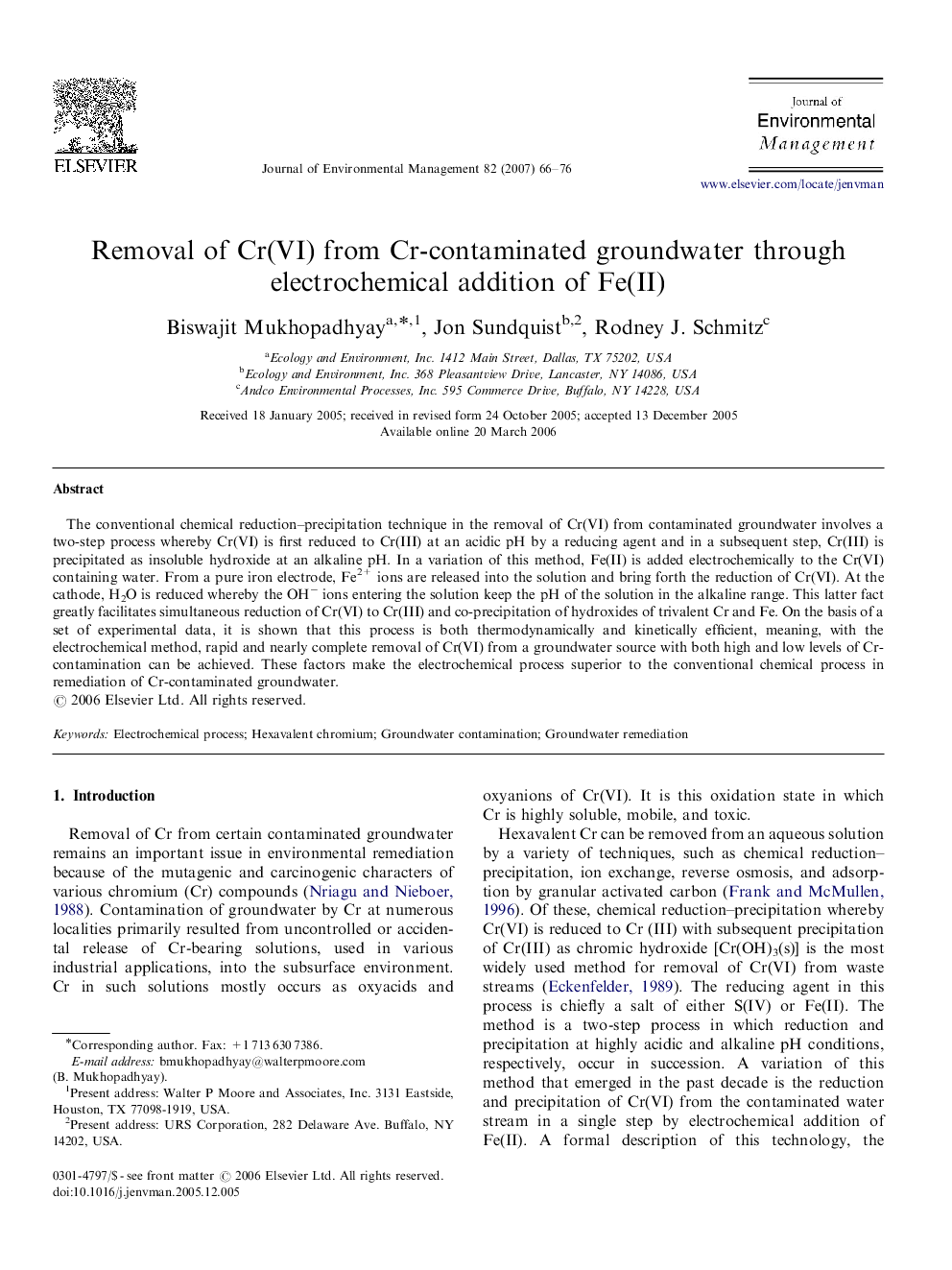| Article ID | Journal | Published Year | Pages | File Type |
|---|---|---|---|---|
| 1057924 | Journal of Environmental Management | 2007 | 11 Pages |
The conventional chemical reduction–precipitation technique in the removal of Cr(VI) from contaminated groundwater involves a two-step process whereby Cr(VI) is first reduced to Cr(III) at an acidic pH by a reducing agent and in a subsequent step, Cr(III) is precipitated as insoluble hydroxide at an alkaline pH. In a variation of this method, Fe(II) is added electrochemically to the Cr(VI) containing water. From a pure iron electrode, Fe2+ ions are released into the solution and bring forth the reduction of Cr(VI). At the cathode, H2O is reduced whereby the OH− ions entering the solution keep the pH of the solution in the alkaline range. This latter fact greatly facilitates simultaneous reduction of Cr(VI) to Cr(III) and co-precipitation of hydroxides of trivalent Cr and Fe. On the basis of a set of experimental data, it is shown that this process is both thermodynamically and kinetically efficient, meaning, with the electrochemical method, rapid and nearly complete removal of Cr(VI) from a groundwater source with both high and low levels of Cr-contamination can be achieved. These factors make the electrochemical process superior to the conventional chemical process in remediation of Cr-contaminated groundwater.
